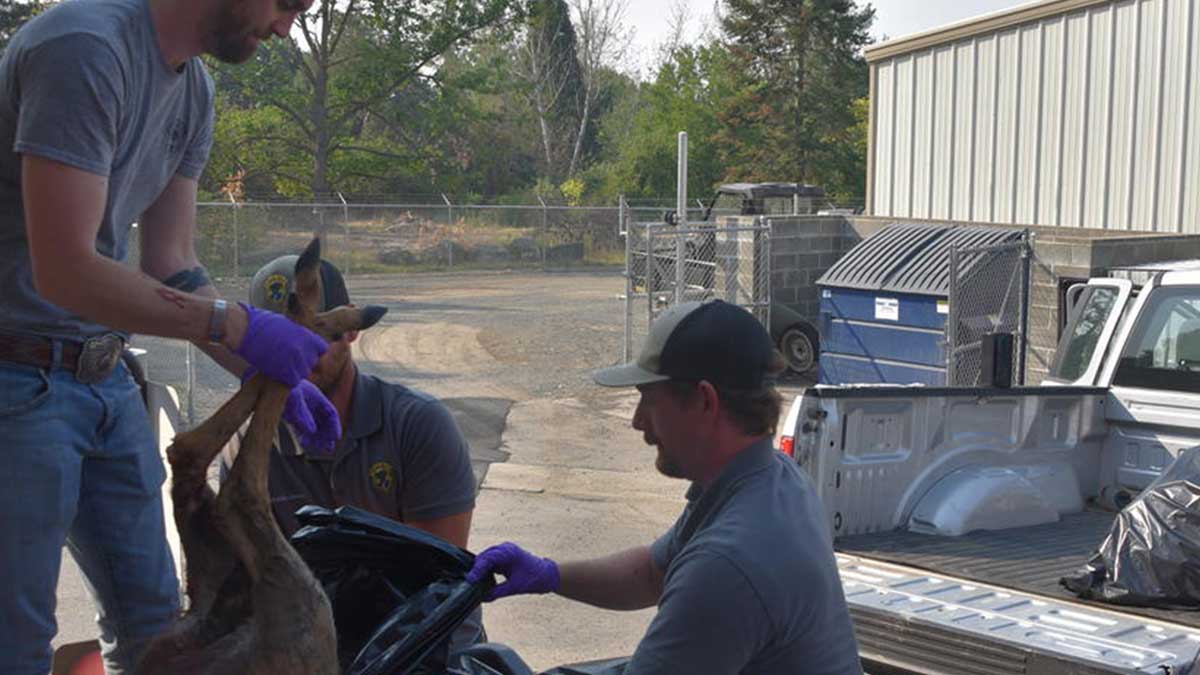Below is a news release from the Idaho Department of Fish and Game.
A project to reduce deer density in the Slate Creek area in Unit 14 north of Riggins to minimize the spread of chronic wasting disease removed more than 150 deer from the area during the first week. Animals that test negative for CWD will be processed and the meat donated to a local food bank.
Fish and Game provided special permits to landowners to shoot deer on their property. U.S. Department of Agriculture’s Wildlife Services staff, who have experience with similar projects, assisted Fish and Game staff in lethally removing deer on both public and private land where both agencies have permission.
Fish and Game is working to keep this process as managed and streamlined as possible. For this operation, methods not typically used for hunting are allowed, including baiting and shooting at night. This is a systematic and very coordinated removal of deer with Wildlife Services. With good numbers of deer expected to be on private land, kill permits were issued exclusively to local landowners just within the project area. Due to these aspects, there will not be any public hunting opportunity for this project. There will be hunter harvest opportunities across Unit 14 this fall as part of our ongoing CWD harvest management strategies.
Fish and Game staff learned a lot during the first week about how to effectively organize and carry out this project. The team has developed an efficient system to remove the whole carcass from the field and process these animals as quickly and cleanly as possible. “Despite the unfortunate circumstances, things are going very smoothly,” says Clearwater Regional Supervisor, JJ Teare. This management effort would not be possible without the cooperation of numerous area landowners and the dedicated work of USDA Wildlife Services and Fish and Game personnel.
Fish and Game personnel take a CWD sample, then skin, quarter, and salvage as much meat as possible. Meat is then carefully bagged, labeled, and transferred to a meat processing facility for storage until testing results come back. Positive animals will be properly disposed of.
Animals that test negative for CWD will be processed and donated to local food banks or directly folks that could use the meat. Landowners can retain their deer but may also provide carcasses to Fish and Game for processing and donation. All potentially infectious carcass parts, including heads and spinal column, will be collected, and transported by Fish and Game to an approved landfill.
CWD is a contagious and fatal neurological disease that affects deer, elk and moose. There is no cure, vaccine, or efficient and reliable CWD test for live, wild animals. CWD is long lived in the environment and can be contracted by animals simply foraging in an area with CWD in the soil. If left unchecked, the disease poses a long-term risk to deer and elk herds and hunting opportunities.
In 2022, Fish and Game sampled 3,171 deer, elk and moose for CWD statewide, and all 15 positive cases were detected in a 6-mile radius within the Slate Creek drainage. The disease was first detected in Idaho in 2021 in the Slate Creek area. The project area encompasses the Slate Creek watershed from the Salmon River east to Nut Basin Road and the southern portion of the McKinzie Creek watershed south to the northern portion of the John Day Creek watershed. The project area encompasses less than 9 percent of Unit 14.
This project is expected to last until control actions are deemed no longer effective or feasible. Contact the Clearwater Regional office for more information (208) 799-5010.
(Photo credit: Idaho Department of Fish and Game)
